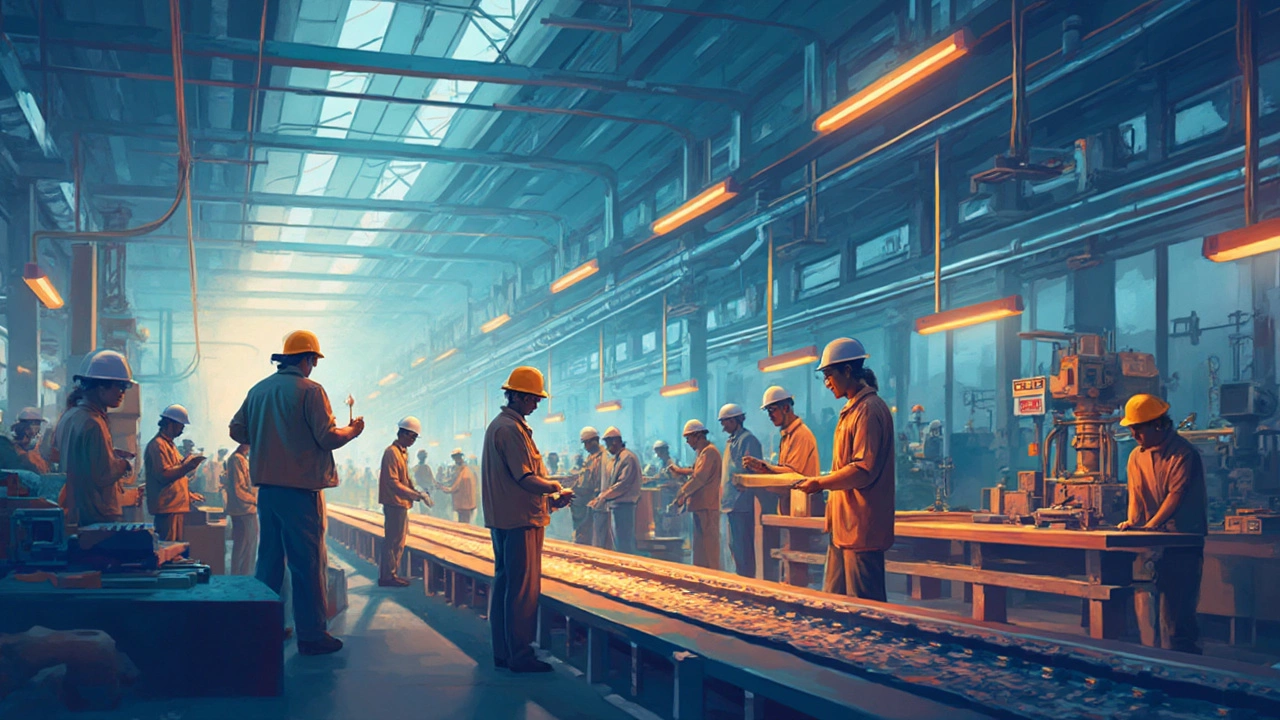Manufacturing Innovations Shaping India's Future
India's factories are changing faster than ever. New machines, smarter software, and greener processes are turning traditional workshops into high‑tech hubs. If you run a plant, supply chain, or just love staying ahead, these innovations are the tools you need to stay competitive.
Why Innovation Matters Right Now
Every time a new robot arm or AI‑driven quality system is introduced, costs drop and output climbs. That means lower prices for customers and higher margins for producers. The government’s Make in India push adds fuel to the fire, offering subsidies and tax breaks for firms that invest in modern equipment.
Take the rise of digital twins: a virtual replica of a factory floor lets engineers test changes without shutting down production. The result? Faster design cycles, fewer mistakes, and a smoother path from concept to market. Companies that ignore these tools risk falling behind cheaper, more agile competitors.
Top Trends to Watch
1. Smart Factories and IoT – Sensors placed on machines now stream real‑time data to dashboards in the cloud. Workers can see a machine’s health, energy use, and output at a glance. When a sensor detects a slowdown, the system alerts the team before a breakdown happens.
2. Additive Manufacturing (3D Printing) – No more waiting weeks for custom parts. With metal and polymer printers, small batches can be produced on‑site, cutting inventory costs and speeding up prototyping.
3. Sustainable Materials – Recycled plastics, bio‑based polymers, and low‑carbon steel are gaining market share. Regulations are tightening, and customers are demanding greener products, so adopting these materials can open new sales channels.
4. AI‑Powered Quality Control – Vision systems equipped with machine learning spot defects faster than a human eye. They learn from each inspection, improving accuracy over time and reducing waste.
5. Collaborative Robots (Cobots) – Unlike traditional robots that work behind safety cages, cobots share space with people. They handle repetitive tasks while humans focus on complex problem‑solving, boosting overall productivity.
These trends aren’t isolated; they reinforce each other. For example, a smart factory’s data can feed AI models that optimize 3D‑printed part designs, while sustainable materials reduce the environmental impact of both processes.
Ready to act? Start small: pick one machine or process, install a sensor, and track the data for a month. Compare the numbers before and after. If you see a clear win, roll the change out to other areas. Remember, innovation is a journey, not a one‑off purchase.
In practice, many Indian firms have already reaped rewards. A mid‑size auto components maker reported a 12% cut in scrap after adding an AI vision system. A plastics converter switched to a recycled polymer blend and gained two new eco‑focused customers within six months.
Keep an eye on government schemes too. Grants for energy‑efficient machines and tax holidays for R&D spending can offset upfront costs. Join industry forums, attend webinars, and network with peers who’ve taken the first steps.
Bottom line: embracing manufacturing innovations isn’t just about staying trendy. It’s about building a resilient, cost‑effective, and future‑ready operation. Whether you’re a startup, a family‑run shop, or a large conglomerate, the tools are there—use them to stay ahead of the curve.

Leading State in U.S. Manufacturing: Insights and Innovations
Uncover which state currently leads the U.S. in manufacturing and how government initiatives are shaping the industry. Discover interesting facts about the state’s contributions and innovative practices driving success. Learn about the role of government schemes in bolstering manufacturing and get practical tips for businesses looking to thrive in this competitive landscape.
Read More